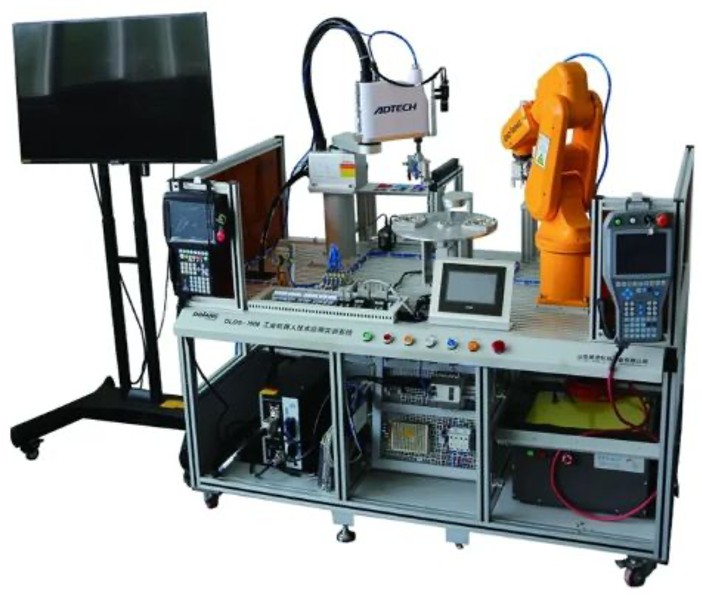
The Robotics lab is a fantastic space dedicated to research and training in the exciting world of robotics. It serves as a hub for various technology fields, where passionate individuals gather to develop and program robots capable of performing a multitude of tasks. A robotics lab encompasses more than just having a collection of robots in one area. It requires the presence of essential robotics lab equipment, including hardware, software, robotics design tools, and skilled human resources that will effectively utilize these resources.

Steps In Setting Up A Robotics Lab
- Define the Objectives: Determine the goals and purpose of your robotics lab. Are you focusing on research, education, or both? This will help guide the setup process.
- Secure a Space: To set up a robotics lab, you’ll need to designate a suitable space and install essential infrastructure. Acquire robotics equipment and set up a computer workstation for programming and control. Purchase some environmental chambers like temperature and humidity chambers to create controlled conditions for testing. Implement safety measures and establish a storage system. Train lab members on equipment usage and maintenance. Foster collaboration with other research labs for knowledge exchange.
- Acquire Essential Equipment: Invest in robotics lab equipment such as robot arms, sensors, actuators, microcontrollers, power supplies, and a variety of tools. Consider the needs of your specific projects and research goals.
- Set Up Workstations: Arrange workstations with computers, programming software, and other tools necessary for designing, programming, and testing robots. Ensure they are ergonomically designed for comfort and productivity.
- Install Safety Measures: Prioritize safety by implementing safety protocols, including proper storage of hazardous materials, fire extinguishers, safety goggles, and first aid kits. Ensure all users are trained in safety procedures.
- Establish Networking and Connectivity: Set up a reliable network infrastructure to enable seamless communication between robots, computers, and other devices. This is crucial for data sharing and remote access.
- Develop a Resource Library: Create a library of robotics-related resources, including books, journals, research papers, and online resources. Encourage continuous learning and knowledge sharing.
- Recruit and Train Staff: Hire qualified personnel with expertise in robotics. Provide training and professional development opportunities to keep them updated with the latest advancements in the field.
- Foster Collaboration: Encourage collaboration by creating spaces for brainstorming, teamwork, and knowledge exchange. Arrange regular meetings, workshops, and seminars to promote interaction among lab members.
- Promote Outreach and Engagement: Engage with the community by organizing robotics competitions, workshops, and outreach programs to inspire and educate others about the exciting possibilities of robotics.
Remember, setting up a robotics lab is an ongoing process. Stay flexible and adapt to emerging technologies and research trends to keep your lab at the forefront of innovation.
Benefits Of Setting Up Robotics Labs In Schools
- Hands-on Learning: Robotics labs provide students with the opportunity to engage in hands-on learning experiences. They can design, build, and program robots, allowing them to apply theoretical concepts in a practical and tangible way.
- STEM Education: Robotics labs promote STEM (Science, Technology, Engineering, and Mathematics) education by integrating multiple disciplines into robotics projects. Students develop skills in problem-solving, critical thinking, and collaboration while gaining a deeper understanding of these subjects.
- Future Skills Development: Robotics labs equip students with essential skills needed for the future job market. They learn to work with cutting-edge technology, develop programming expertise, and enhance their creativity and innovation.
- Real-World Application: Students can see the direct application of their knowledge by programming robots to perform tasks and solve real-world problems. This connection fosters enthusiasm and motivation for learning.
- Teamwork and Collaboration: Robotics labs encourage cooperative learning and teamwork. Students work together to brainstorm ideas, build robots, and troubleshoot challenges. They learn to communicate effectively and appreciate the value of diverse perspectives.
- Boosts Creativity: Robotics labs provide a platform for students to express their creativity. They can design unique robots, develop innovative solutions, and explore their imagination through the process.
- Career Exploration: By engaging with robotics in a lab setting, students gain exposure to various career paths related to robotics and automation. This can spark their interest in pursuing careers in robotics engineering, programming, research, or related fields.
- Inclusive Learning Environment: Robotics labs can be designed to accommodate students with diverse abilities and learning styles. With adaptable equipment and inclusion strategies, all students have the opportunity to participate and succeed.
- Problem-Solving Skills: Robotics labs foster problem-solving skills as students encounter challenges and find solutions during the design and programming process. They learn to analyze problems, develop strategies, and persist in finding effective solutions.
- Fun and Engaging: Robotics labs provide a fun and engaging learning environment. Students enjoy the excitement of building robots, witnessing their creations come to life, and realizing the impact of their work.
Overall, robotics labs in schools empower students with valuable skills, inspire interest in STEM fields, and prepare them for the opportunities and challenges of the future.

Conclusion
Setting up a robotics lab is crucial for schools and research institutions. It involves carefully organizing and maintaining three primary environments to ensure a smooth and disaster-free operation.If you want to learn about robotics lab equipment, Dolangedu can help you.
The first environment is the hardware environment. It encompasses a wide range of tools and components used in robotics. It is essential to keep this environment clean, orderly, and well-organized to prevent any disruptions or shortcomings. A clean and organized hardware environment ensures easy access to equipment and minimizes the risk of accidents or damage to valuable robotics components.
Similarly, the software environment requires attention. This environment is where software is installed on computers to program and control robots. It is crucial to ensure that the software environment is properly configured and up to date. This helps prevent coding errors or glitches that could cause unintended consequences and potentially lead robots astray. Regular software updates and proper coding practices are essential to maintain the integrity and reliability of the robotics lab.
Lastly, the human resource environment plays a vital role in the successful operation of a robotics lab. Skilled personnel, such as robotics experts and technicians, need to be present to effectively utilize the hardware and software environments. Training and continuous professional development should be provided to keep the human resources up to date with the latest advancements in robotics technology and best practices.
By paying close attention to the hardware, software, and human resource environments, a robotics lab can function optimally, fostering a safe and productive space for research, education, and innovation.



